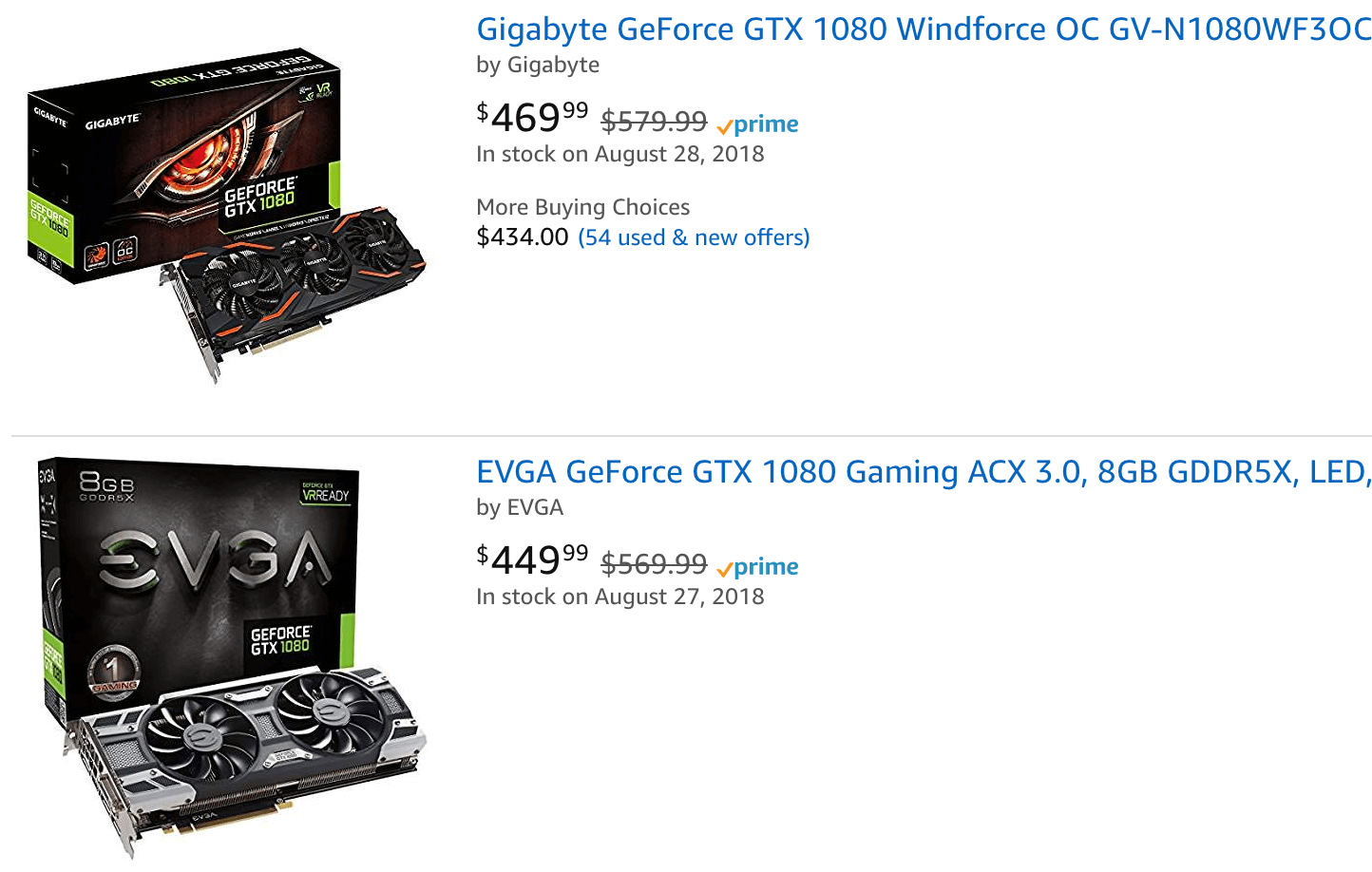These are the same AIBs that milked $800+ out of 1080s right? Why should I feel bad for them? They made record profits and many ignore AMD GPUs completely. This is what you get.
What they SHOULD do is tell nvidia where to stick it, but none of them have the brass balls to do that.
When you're the only show in town you dictate and do as you please. You can blame Nvidia for this, but every major corporation that finds themselves in this position usually abuses the crap out of such domination. The fact is they have just been doing their jobs a lot better than the graphics division at AMD.
If AMD weren't in such a poor state this wouldn't be happening. They had Nvidia on the run with the Radeon 4000 and 5000 series, the 7000 wasn't bad either but since then it's been gradually downhill.
I hope that all that Ryzen cash flowing in is quickly put into the graphics division.
The problem here is that nVidia always had a bigger mindshare and even when 4000 - 7000 Radeons were out nVidia made like 10 times more money than AMD on graphics cards eventually AMD couldn't complete because they run out of money
And here come the fanboy excuses.
The 5000 series came very, VERY close to taking over 50% marketshare from nvidia's 400 series. If nvidia was making "10 times the money" despite that, then AMD was wasting MASSIVE amounts of cash. That is AMD's fault, not the consumer.
This "midshare" you speak of isnt some nebulous nvidia plot. When AMD is competitive, they sell well. The reason AMD's sales never competed well with nvidia are multi-layered, but boil down to the fact that AMD didnt always compete. The 2000 series had heat problems, the 4000 and 5000 series were great (and again, AMD nearly took 51% marketshare during this time) and sold well. The 6000s AMD fell asleep at the wheel, assumed nvidia couldnt compete, and rebrandeon'ed the 5000 line, with only the 6950/70 being new cards, and proceeded to be utterly blind-sighted by the GTX 580. The 7970 was a grat card, duking it out with the 680, but again, AMD's drivers were notably inferior to nvidias in terms of support, releases, bug fixes, and bugs that broke games. It was STILL common practice to keep several catalyst drivers on hand for whatever game you wanted to play.
When a company doesnt competitively compete consistently, consumer confidence in the brand drops. AMD's sales are not kept artificially low by this mystical "mindshare", its the simple fact that consumers got tired of dealing with AMD's lack of support, and so sales dropped. Nvidia's marketshare hit a record hgih because AMD's 300 series was 9 months late and full of nothing but rebranded GPUs that were not competitive with nvidias. AMD finally got their act together with the 400 series and, surprise surprise, sales rose, despite AMD not competing against 2/3rds of nvidia's GPUs. VEGA's sales tanked because again AMD fell asleep at the wheel and developed an arch that was slower, hotter, more power hungry, and more expensive and difficult to produce using a difficult to use memory that was in short supply compared to a year old 1080.
If AMD would drop the constant attempts to make HBM a thing, stop the constant special feature development that no devs will use (mantle, tressFX, async, ece), and just concentrate on making fast capable GPUs, they would have a much larger market then they have now. No special mindshare, just a capitalist economy stating that the non competitive company is going to struggle to stay afloat as long as they push poor support and inferior GPUs.
\
Hopefully, with raja gone and Su firmly in control, the same care that went into ryzen will be applied to radeon, but I am not holding my breath.

